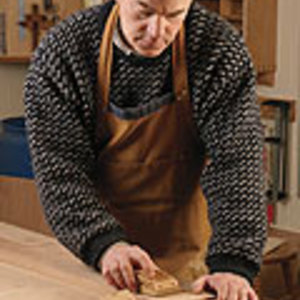All About Supports and Bases

A one-man shop lacks one major feature, an extra set of hands. Whether you’re trying to move heavy equipment, manipulate large sheet goods, or cut heavy lumber, shop aids such as mobile bases and support stand can help make two-man jobs manageable for the lone woodworker.
What Counts:
• Strength and stability
• Ease of adjustment
• Maximum capacity
• Type of support surface
• Ease of movement
• Types of locking mechanisms
Put your power tools on wheels
Mobile bases are wheeled cradles that allow even very heavy machinery to be moved from one part of a shop to another. For those working in tight quarters, mobile bases allow equipment to be pushed out of the way when it’s not in use and large areas of floor to be freed up as needed.
A half-dozen manufacturers offer bases in varying designs and capacities. The stoutest units are rated to carry 700 lb., but even the smallest are designed to carry 300 lb. — more than enough for a 14-in. bandsaw and many tablesaws. There are two basic types: dedicated bases made to fit specific machines and universal bases that can carry anything that will fit in the base’s adjustment range. Dedicated bases often can accommodate more than one piece of equipment from the same manufacturer.
Assembly required
Bases require some assembly, a process that ranges from very fast for bases that arrive nearly complete to very complex for bases with more than 100 parts. Most are of all-metal construction, although one manufacturer offers a base that’s assembled with wood rails provided by the buyer.
Bases have either three or four wheels. The four-wheeled models work well on flat, level floors but are not as stable on uneven floors. Some bases are easier to move than others. When the base is in position, wheels are locked so the machine doesn’t shift as it’s being used and each manufacturer has adopted its own locking mechanism. They include hand- and foot-operated brakes, some more difficult to operate than others.
Support stands
A support stand is a big help when moving long or heavy pieces of lumber over a saw, jointer or planer. A stand prevents the board from sagging as it gets farther away from tool’s work surface for more accurate results and less risk of a mishap.
Support stands are made by several manufacturers and in a variety of styles. They consist of a metal frame that supports an adjustable work surface that can be set from about 2 ft. to nearly 4 ft. in height, depending on the make and model. Stands can have three or four legs supporting a central column, or have folding legs. Weight capacities range from about 150 lb. with light-duty stands all the way up to 500 lb.
Benefits vary among different designs
There are four basic designs for the support surface: single rollers, multiple rollers, a series of ball bearings, and flat skid plates. Some may combine two of the surfaces with an interchangeable design. Ball-bearing surfaces allow stock to be moved in any direction, but lumber on edge can fall between the bearings. Single-roller stands are effective for supporting long boards being ripped on the tablesaw, while multiple roller stands work best for crosscutting because of their larger surface area.
Stability and the ease of height adjustments are key considerations. Some stands tend to skid across the floor or have inadequate side-to-side stability because of a small footprint. Some stands are more difficult to adjust for height than others, and some available models don’t have enough height capacity to work on a bandsaw. Prices vary by make and model.
Fine Woodworking Recommended Products

Stanley Powerlock 16-ft. tape measure

Rikon 10-3061 10-in. Deluxe Bandsaw
The saw has two speeds: 3,280 sfpm (surface feet per minute) for wood and 1,515 sfpm for soft metals and some plastics.

Jorgensen 6 inch Bar Clamp Set, 4 Pack





















Log in or create an account to post a comment.
Sign up Log in